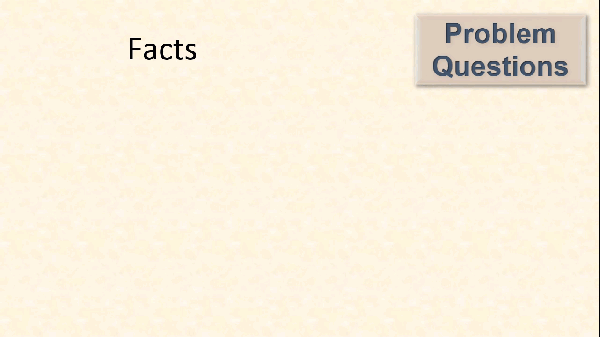


Are you sure you want to reset the form?
Your mail has been sent successfully
Are you sure you want to remove the alert?
Your session is about to expire! You will be signed out in
Do you wish to stay signed in?
Author Mark Davys tells us about the time he experienced an excruciating pain in his arm while marking Land Law assessments and how his doctors approached his treatment.
The most important factor in successfully answering a problem question is to approach it systematically and logically. Working through the four elements that comprise the IRAC method is one way to achieve this.

IRAC is not the only such technique, but it is the one that has been chosen for the suggested answers to the problem questions in the Exercises in Land Law. If your law programme teaches you a different method, you should use it (in fact, most methods are variations on IRAC in one way or another so you should still be able to benefit from the suggested answers on this website).
Think of IRAC as a process to be completed, not a series of sub-heading to be filled. That is to say, it is a means of analysing the question, rather than an answer plan as such. All but the most elementary of problem questions will involve:
more than one issue,
several legal rules (often at several different levels), and multiple possible applications of the law to the facts.Consequently, applying one rule, may mean that you need to find, consider and apply another rule before you can reach a conclusion, and so on.
Consequently, applying one rule, may mean that you need to find, consider and apply another rule before you can reach a conclusion, and so on.
Tutors' Tip
It is tempting to start writing your answer straight away. However, even in an exam it is well worth working through the Issues, Rules and Application in outline before writing your final answer.
For tutorials and assignments, take time to research the rules, building up a portfolio of resources (including extracts from the judgments), before starting to apply what you have discovered to the facts.
Start by identifying the issues that you are being asked to address.
Tutors' Tip
You will find this much easier if you have been thinking about why the rules that you have been studying came into being. Case law arises out of specific disputes between specific people.
Even statute law is usually designed to address an identifiable problem or mischief. Thinking about these issues while you are learning will help you to identify them in tutorial and assessment questions.
Most problem questions contain more than one issue. Sometimes these are identified for you (for example, the question may be divided into parts). At other times you will need to separate the issues and let them inform the structure of your answer.
Look at each of the issues in turn. You need to explain:
Tutors' Tip
It is important to identify the specific issues and the specific rules that you need to address those issues. If you are not confident that you can do so, do something about this. Do not write a general answer covering all the rules on the topic concerned in the hope that some of what you say will be relevant.
Such answers rarely achieve high marks. If your tutor or examiner wanted to write everything you know about a given topic, they would ask you to do so, not set you a problem question.
Application
Apply the law to the facts of the problem. You need to explain:
Tutors' tip
You must set out your reasoning. The consequences of a particular rule or case may be obvious to you, but you still need to explain the kink between them for the reader or examiner: otherwise how will they know how you have come to the conclusion that you have?
Conclusion
Can you draw your analysis together to answer all the issues raised in the question? Check that:
Tutors' Tip
Often, applying the rules that you have identified will bring to light aspects of the question that you have not previously considered. Keep asking questions, and be prepared to look at more sources, including cases and statutes, until you have dealt with every aspect of the issues raised by the question.
